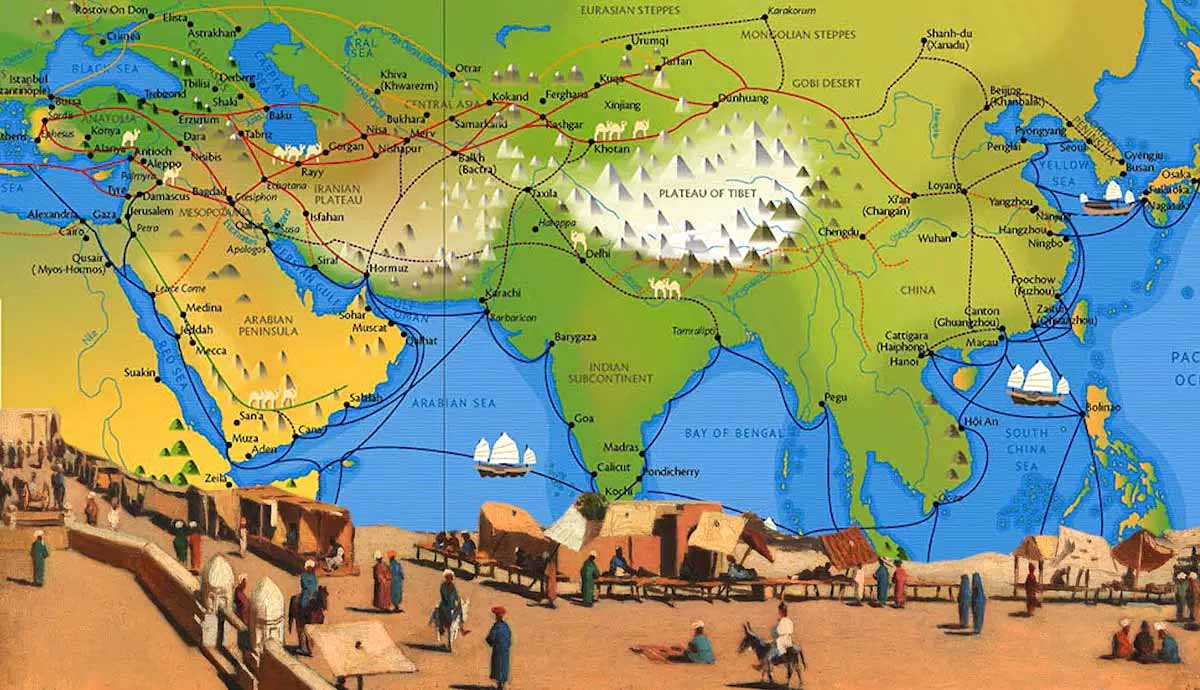
The year was 1492. Genoan sailor Christopher Columbus stood aboard the Santa Maria, eyes trained to the west, hoping to find a passage to the West Indies and its vast store of spices and potential wealth. With the Niña and the Pinta following close by, he would succeed on a mission he did not set out on – the discovery of a New World, and the change of the destiny of the rest of the Old.
That’s the story we grew up learning, possibly the first history lesson many of us received in elementary school. But the craziest part of Columbus’s story does not happen during or after his great exploration venture. The crazy part is what happened before. The crazy part is how Columbus got the money for it.

Backing up to 1484 – Christopher Columbus was already a seasoned sailor, having traveled up and down the coasts of Europe and West Africa. Since the Ottomans had conquered Turkey and the Eastern Roman Empire in the 1450s, the “Silk Road” to the East and its riches were shut down. Christopher was an enterprising sort, and thought he had figured out a shorter way to India on account that he did not have the distances between latitudes calculated properly due to confusion between Arabic and Roman calculations. No, Christopher Columbus did not think the earth was flat – no one really did at that time.
He thought it was SMALLER than it really was. And he was not letting go of that idea.
Seeking Funding From the World’s Foremost Sailors – the Portuguese

Columbus approached King John II of Portugal in 1484, but was rejected on two grounds. The Portuguese were the world’s premier sailors and explorers at the time, and a committee appointed by John concluded that Columbus’s calculations of the earth’s size were incorrect, and that any voyage would take substantially longer than he predicted. The other ground for rejection was that the Portuguese were already developing a route to the Orient around the southern tip of Africa, and they did not want to waste time and resources on a questionable route in the opposite direction that would take too long because there definitely was not a giant land mass full of riches to exploit in the way.
Seeking Funding From the Country Next Door to the World’s Foremost Sailors – the Spanish

So a rejected Columbus goes to the King and Queen of Spain – actually, at the time, it was the monarchs Queen Isabella I of Castile and King Ferdinand II of Aragon, who were in the middle of the Reconquista – the reconquering of the Spanish peninsula from Muslim rule, which had been in place in some areas of Spain for over 700 years. Since they were in the middle of a rather large military operation, Ferdinand and Isabella were not quite ready to sponsor a voyage across a wide ocean in the wrong direction that did not have a giant land mass in the middle of it full of riches to exploit in the way.

Columbus, ever the optimist, then goes back to Portugal. Unfortunately for him, the guy who ALSO got back to Portugal was a sailor named Bartholomeu Dias who had figured out how to go around the southern tip of Africa. The Portuguese, walking around with dollar signs for eyeballs, did not have time for Columbus and his crazy ideas about sailing west to India. There was not anything useful in doing something so silly from a sailor who did not know how to calculate latitudes properly.
One Last Shot at the Spanish, Getting Desperate, and Spain Comes Through

So, Columbus goes BACK to Ferdinand and Isabella in 1491. The King and Queen of Almost Spain turned him down again. Wars and all. In early 1492, Columbus started to think that the French might be reasonable people, and Charles VIII was called “The Affable,” so he might be agreeable. Columbus heads north, but is not long upon the road when he receives word from the King and Queen of Spain, who had just finally run the Muslims out of the country and had some spending money.
And there you go. Almost a decade of consistently pestering the royalty of Spain and Portugal allowed Christopher Columbus the opportunity to prove to everyone the earth was smaller around and that there was plenty of money to be made by sailing in a different direction.
Don’t you love it when great historical visionaries with crazy ideas know what they’re doing?










